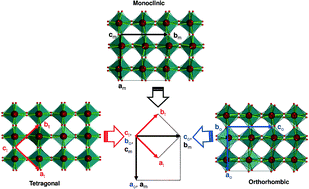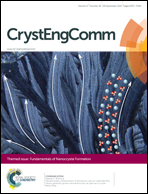In situ high temperature X-ray diffraction, transmission electron microscopy and theoretical modeling for the formation of WO3 crystallites†
Abstract
We study the transformation that WO3 nanoparticles produced by Flame Spray Pyrolysis undergo when subjected to heating and cooling cycles by means of accurate in situ XRD and HRTEM investigations supported by atomistic modeling at the level of Density Functional Theory. As-deposited particles, initially in the monoclinic phase, reversibly transform into the high-temperature orthogonal and tetragonal phases (and vice versa) irrespective of the direction of the temperature gradient. However, upon heating the particles experience an irreversible change of morphology as a consequence of evaporation/reprecipitation processes leading to the formation of larger particles, some of which are elongated (aspect ratios of up to 3 : 1) along various crystallographic directions of the tetragonal unit cell. On the basis of the results of extensive ab initio thermodynamic calculations of surface energies and first-principles molecular dynamics simulations of the growth process, we rationalize these findings in terms of different surface stabilities and reactivities towards gas-phase deposition of molecular WO3 presented by the nanocrystal facets.

- This article is part of the themed collection: Fundamentals of Nanocrystal Formation

 Please wait while we load your content...
Please wait while we load your content...